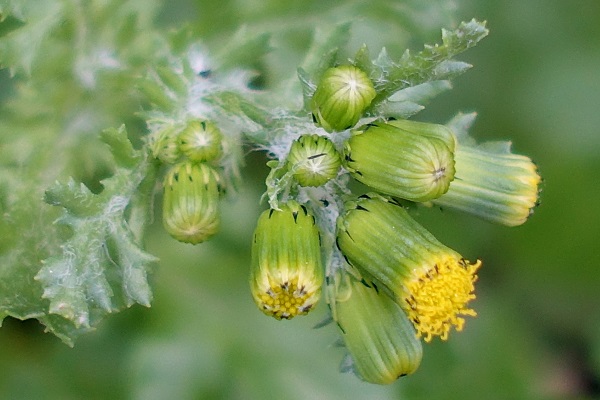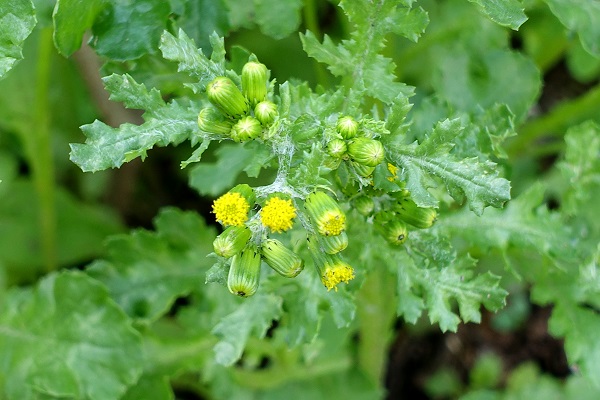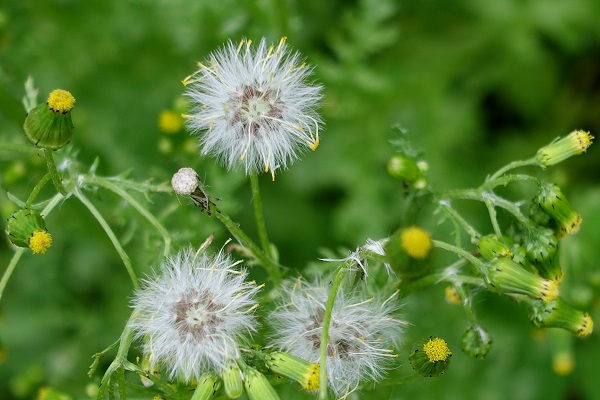Common Butterweed, Common Groundsel, Old-man-in-the-spring,
Hebrew: סביון פשוט, Arabic: الشيخة الشائعة
| Scientific name: | Senecio vulgaris L. | |
| Synonym name: | Senecio dunensis Dumort., Senecio radiatus W.D.J.Koch | |
| Common name: | Common Butterweed, Common Groundsel, Old-man-in-the-spring | |
| Hebrew name: | סביון פשוט | |
| Arabic name: | الشيخة الشائعة | |
| Family: | Compositae / Asteraceae, Sunflower family, משפחת המורכבים |

|
| Life form: | Annual | |
| Spinescence: | Non- spinescent | |
| Succulence: | Non-succulent | |
| Stems: | Up to 40cm, weak, irregularly-branched stems | |
| Leaves: | Coarsely pinnatifid | |
| Inflorescence: | Capitula in corymbs, heads discoid, 8--20+ in loose, rounded to flat-topped clusters | |
| Flowers: | No petals (ray flowers), just a greenish yellow disk about 6mm across that barely exceeds the cylindrical base (involucre) beneath it. There are up to 21 principal bracts (phyllaries), about 6mm long with an outer layer of about 10 shorter bracts. Bracts are hairless and green with conspicuous blackish tips. Stalks are hairless or variably covered in matted hairs. | |
| Fruits / pods: | Achene, 1.5-2mm, appressed hairy between the ribs | |
| Flowering Period: | February, March April | |
| Habitat: | Disturbed habitats, Nutrient-rich soils, ruderal | |
| Distribution: | Mediterranean Woodlands and Shrublands, Mt. Hermon, Semi-steppe shrublands | |
| Chorotype: | Euro-Siberian + Med + Irano-Turanian | |
| Summer shedding: | Ephemeral |

Derivation of the botanical name: Senecio, from senex, old man, referring to the gray hairs on the seeds. vulgaris, common. The Hebrew name: סביון, savion, from סב, sav (=old man); loan translation of the scientific name Senecio, from latin senecio, (=groundsel), from senex (=old man).

|